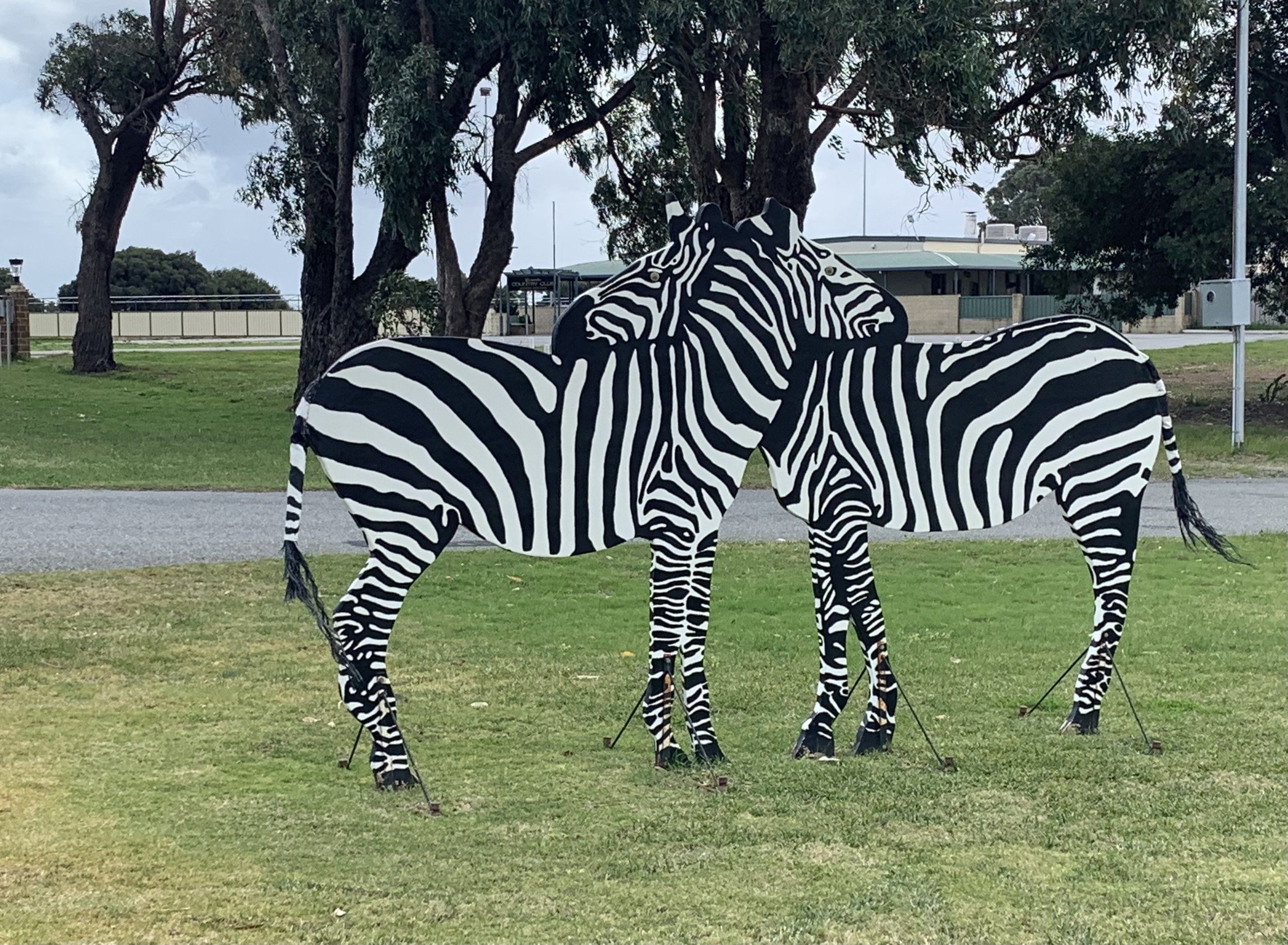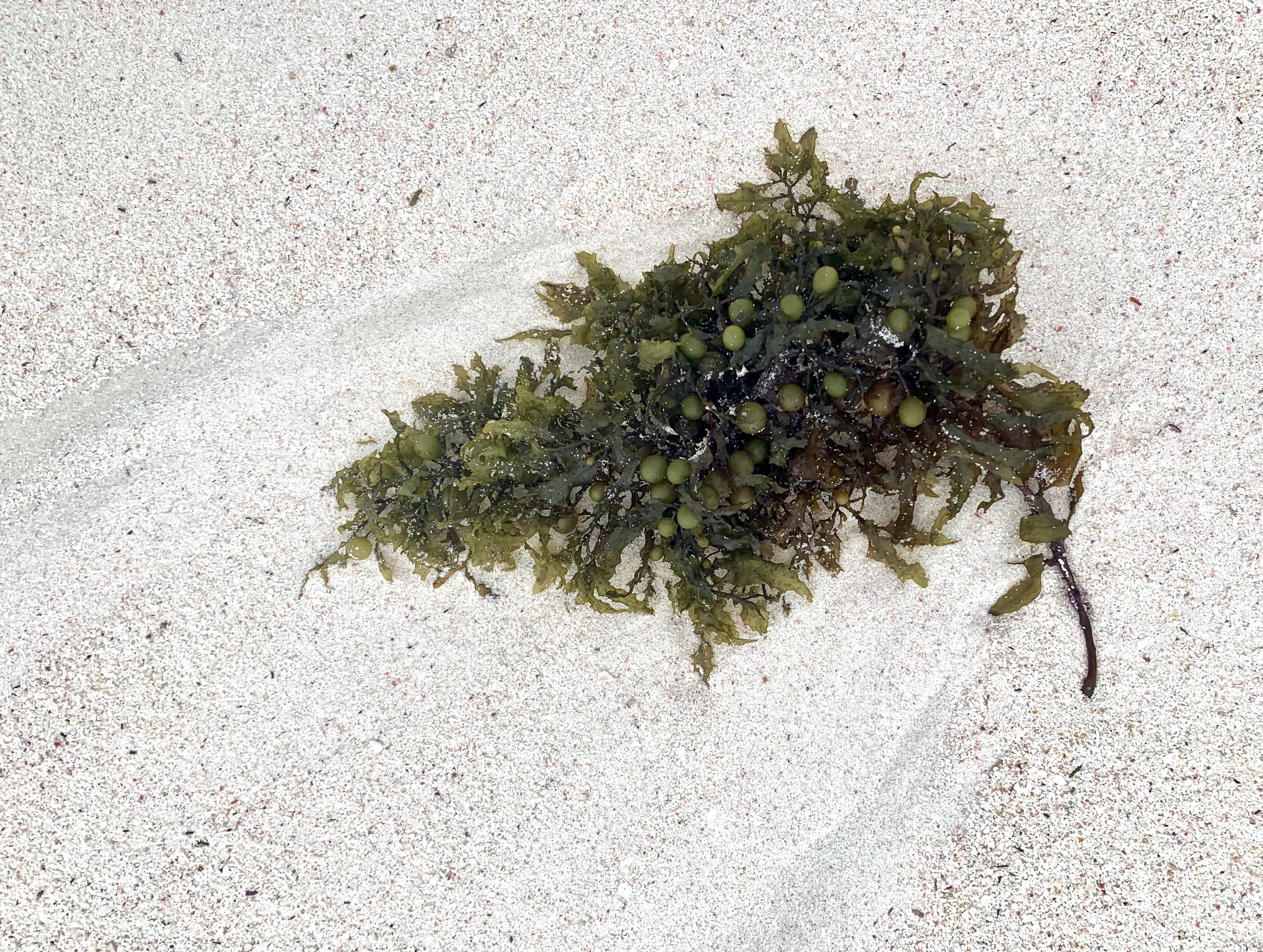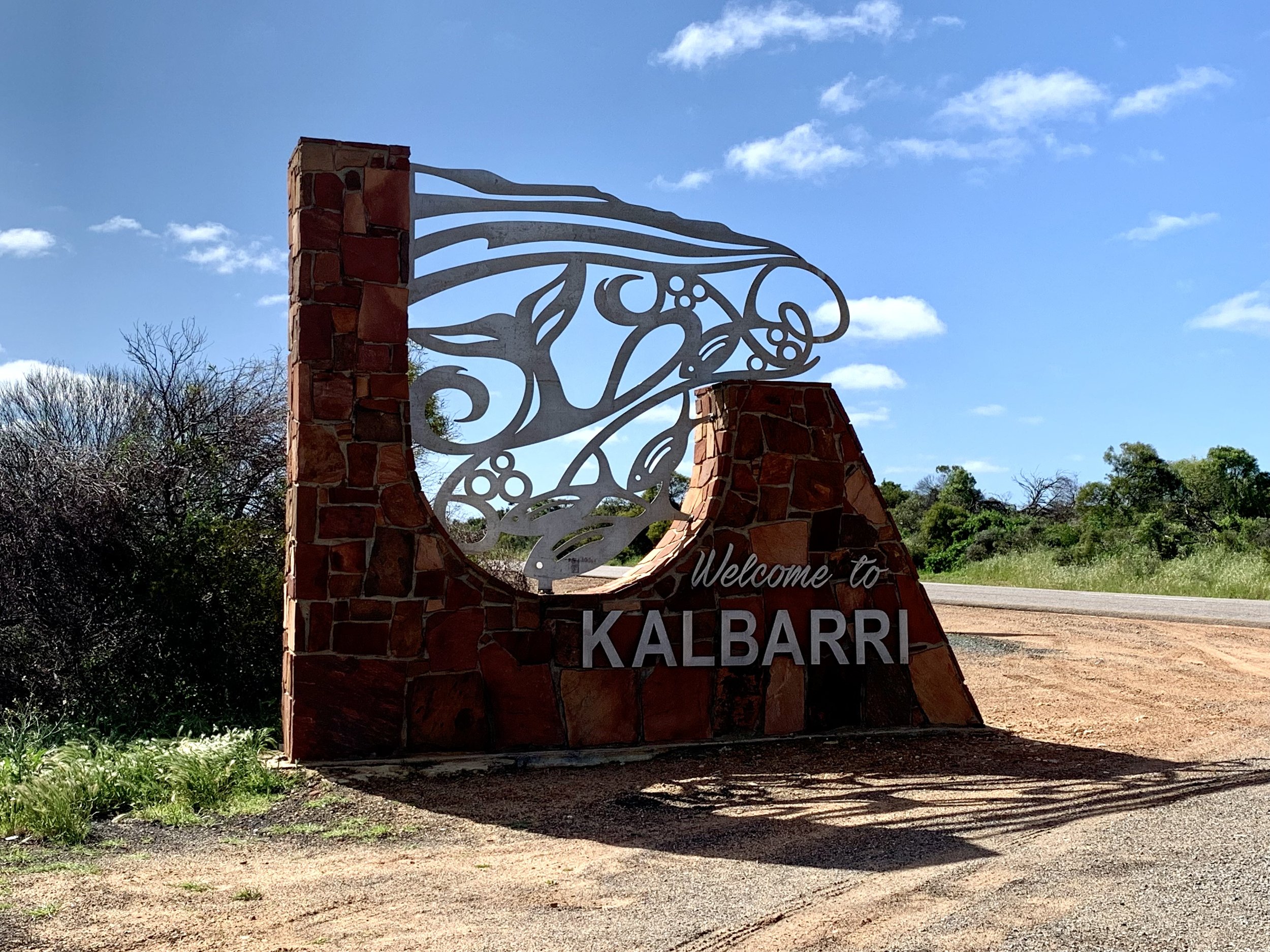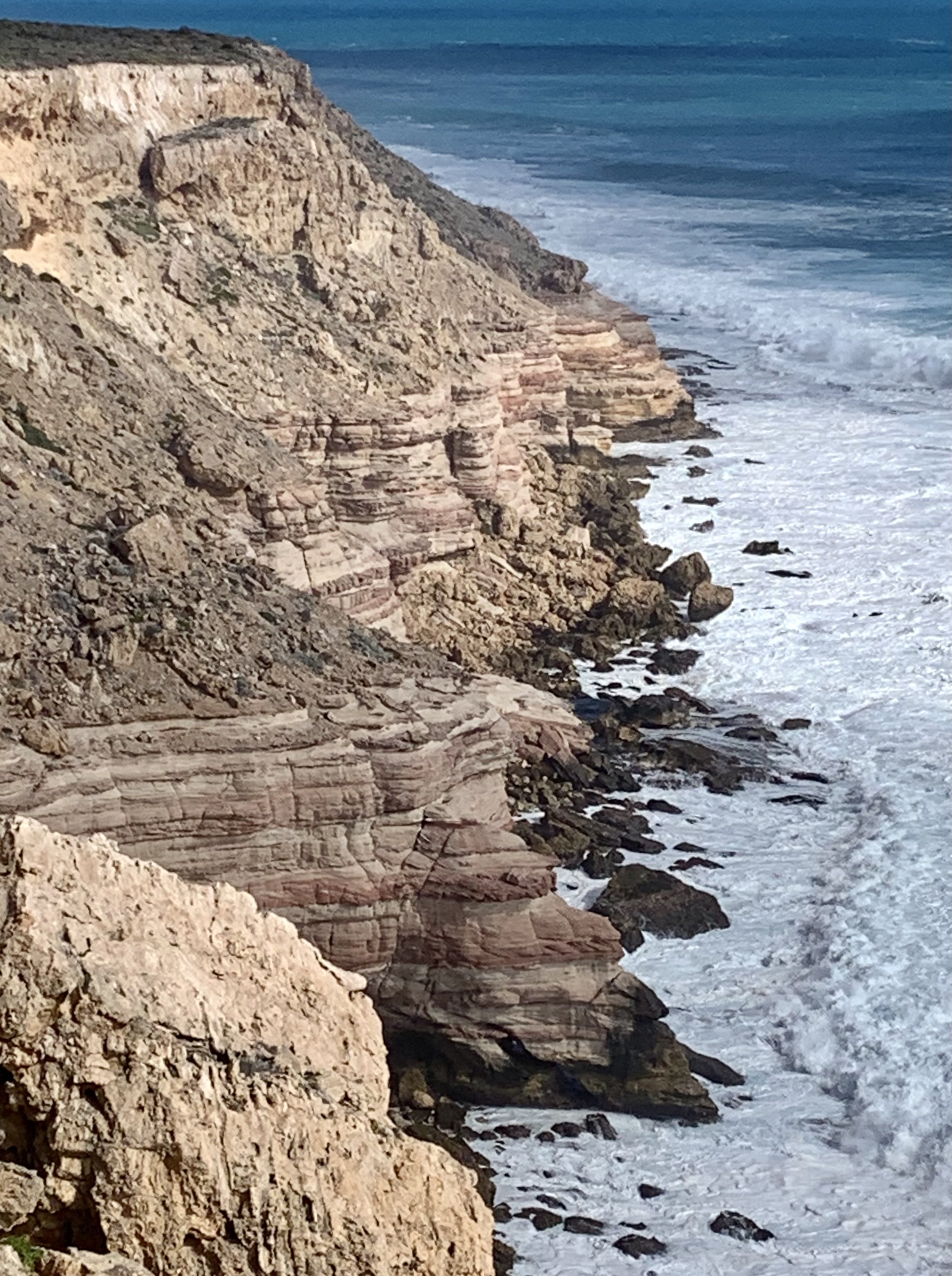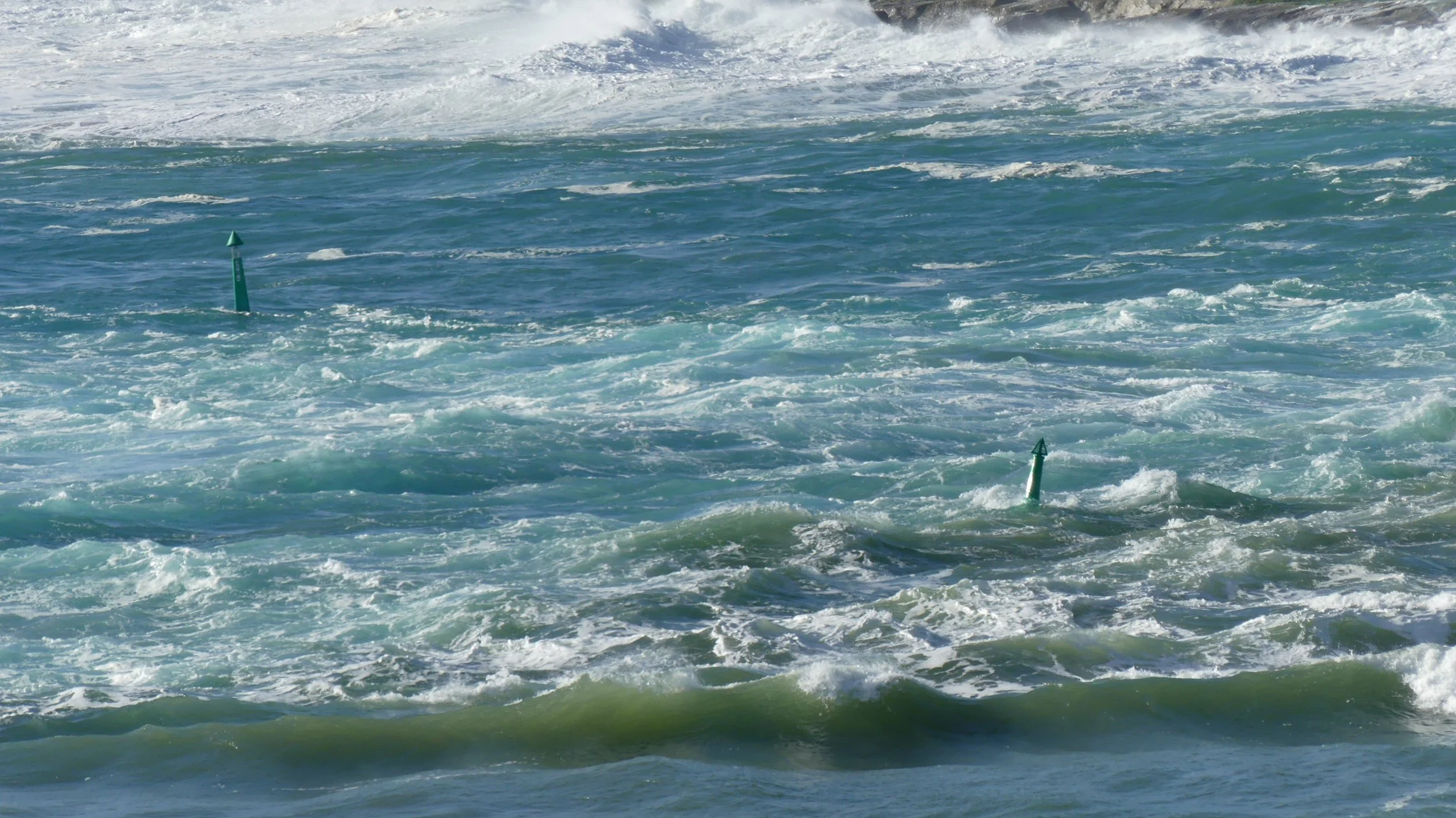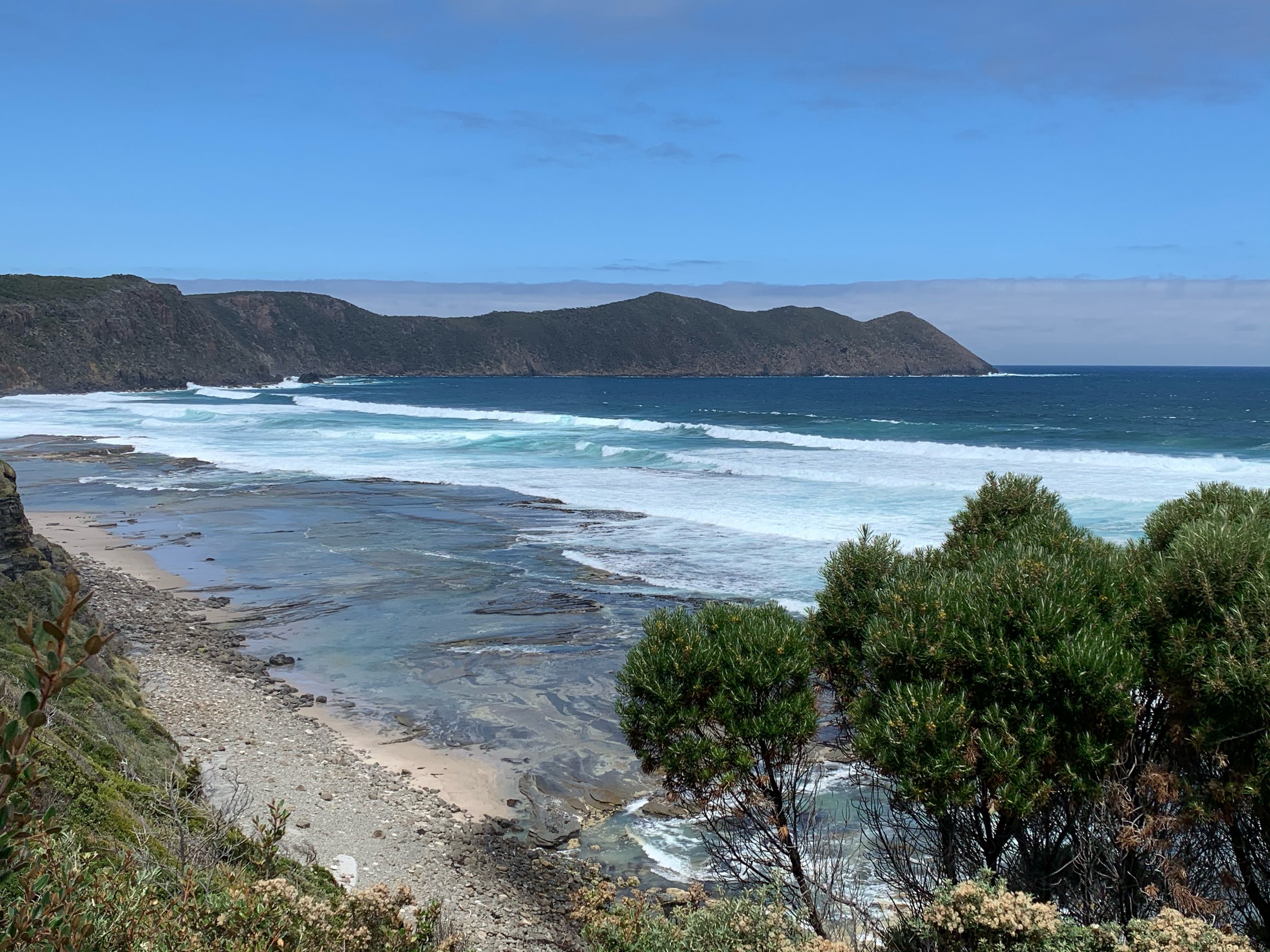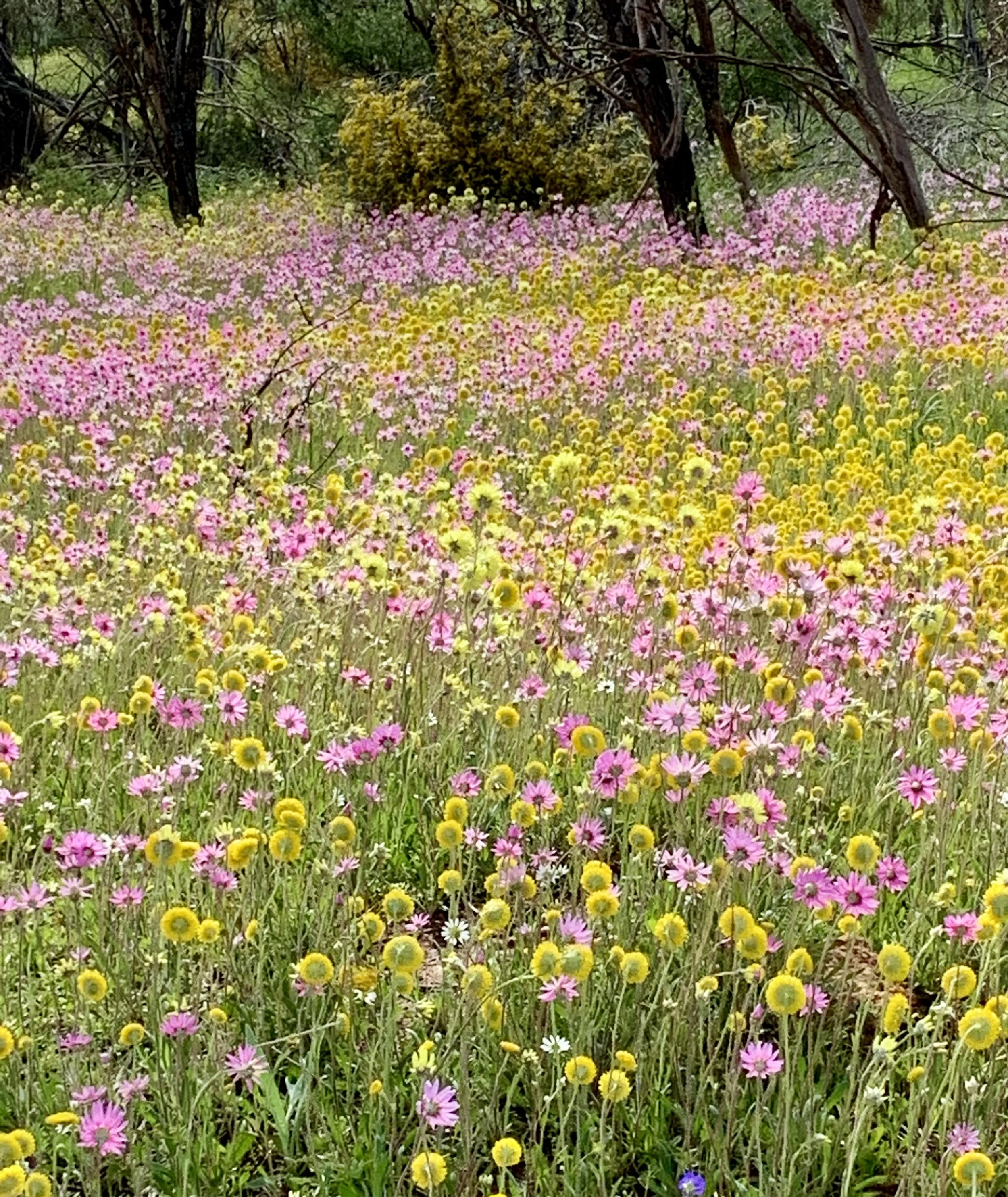To Kalbarri
As we continued driving north, an almost constant stream of caravans was heading in the opposite direction. ‘Adios’, we called to them, waving. We knew not whether they were fleeing inclement weather, or it was simply time for them to head home. In all probability, however, it meant less crowded campsites where we were going.
We’d heard recently from other travellers about queues to get into campsites in warmer parts. The Van needed less space than a caravan, and considerably less time to park and hook up, but if we wanted to explore once we were in position, it was better to do so on foot. In popular campsites, or less structured ones in remote areas, it was slightly disconcerting to book in and then drive off, in case someone nabbed the spot later. The majority of campsites we used, however, were well organised and well run; so we soon learned to relax.
To recap, in the previous few days we had travelled from Fremantle to Cervantes, Nambung National Park (Pinnacles desert), Dongara and Geraldton. Highlights included:
Zebra Crossing, Cervantes Art Trail
Beach spinifex, Cervantes coastline
Hangover Bay, Nambung NP
This kilometre-long beach may look a bit messy, but its seaweeds were nicely set off by the pale sand. Apparently, the bay takes its name from a nearby hill.
Geraldton is called a regional city; it’s the largest city north of Perth; and the only city on the Coral Coast. It felt huge to us: we’d quickly re-adjusted to small-town life – or even no-town life – after our few days in Fremantle. It was only a hop, skip and a jump from Geraldton to Kalbarri National Park.
Kalbarri is 575 km north of state capital Perth, at the northern edge of a climate transition zone in which Mediterranean becomes semi-arid. The town is on the coast at the mouth of the Murchison river, which you can see through the hole in the rock at the top of the page. I’m not sure which is more impressive; the gorge the river has cut through the splendidly named Tumblagooda Sandstone in the National Park, or Kalbarri’s dramatic coastline.
Those promoting this part of the world list its many attractions, some of which I would question are appropriate in such a stunning natural setting. Scenic flights disturb many people on the ground: the odd one’s OK, but not every half-hour, buzzing about like annoying flies.
If you’re approaching Kalbarri from the south, do not miss Hutt Lagoon, a pink salt lake. It is definitely pink; outrageously and delightfully pink.
Our previous pink-lake experiences, in Victoria, had been underwhelming, and I’d concluded it was unlikely we’d find an impressive example. I’d even researched the possibility of visiting the pink lake generally acknowledged to be the best, Lake Hillier on Middle Island in the Archipelago of the Recherche, also known as the Bay of Isles. But it was too hard. There was no accommodation on Middle Island; boat trips were few and far between at the time; and viewing by helicopter was unsustainable and out of the question for us.
Then we found Hutt Lagoon. It was really really pink!
Archipelago of the Recherche is probably in my top three contenders for Best Australian Place-name. Recherche was one of two ships on a rescue mission by Bruni d’Entrecasteaux to find Jean-François de Galaup, comte de Lapérouse, a French naval officer and explorer, who disappeared during a scientific expedition around the world in 1788. The second ship was the Espérance.
Why are some lakes pink? It’s all about the presence of salt-loving algae (Dunaliella salina) and halobacteria that secrete the carotenoid pigments responsible for the colour. Most pink lakes don’t stay pink permanently; and will be pinker or not very pink according to weather and water conditions. But Hutt’s colour does not fade; its pink is consistently bubblegummy.
And then there were mighty cliffs, a window, and a rival to Durdle Door in Dorset UK.
Nankeen Kestrel
Bottlenose dolphins
Nature’s Window
450 million-year-old ripples in the rock
Summer dies and swells rise
The sun goes down in my eyes
See this rolling wave
Darkly coming to take me home
Thoughts inspired by Third Eye Blind
Lyrics written by Stephan Jenkins


